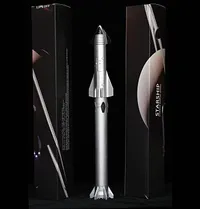How to watch SpaceX's 3rd Starship launch test live online today
The third launch of the 400-foot-tall megarocket is targeted for 9:02 a.m. ET on March 14.
Update for 9:58 a.m. ET: SpaceX successfully launched Starship on its third integrated test flight. Read our full coverage here.
SpaceX is set to perform the third orbital test of its Starship rocket on Thursday (March 14), and you can watch the event for free online.
Standing over 400 feet (122 meters) tall, this huge rocket consists of two parts. The first is a stainless steel, reusable upper stage that's known also as "Starship," and the second is a Super Heavy first-stage booster. Starship is currently the largest and most powerful rocket ever built. Its ultimate aim is to help astronauts journey to the moon, and eventually Mars, as they embark on more sustained space missions and perhaps start creating settlements on the alien worlds.
SpaceX said on Wednesday (March 13) that Thursday's launch window will be 110 minutes long and will open at 8 a.m. EDT (1200 GMT), but early Thursday the company said it is now targeting 9:25 a.m. EDT (1325 GMT) for the liftoff. The company will stream the event beginning at 8:52 a.m. EDT (1252 GMT). A livestream of the rocket's test will also be available to watch on Space.com's YouTube channel here.
Related: SpaceX eyes March 14 for 3rd Starship test flight
Starship Die Cast Rocket Model Was $69.99 Now $47.99 at Amazon.
If you can't see SpaceX's Starship in person, you can score a model of your own. Standing at 13.77 inches (35 cm), this is a 1:375 ratio of SpaceX's Starship as a desktop model. The materials here are alloy steel and it weighs just 225g.
Note: Stock is low so you'll have to act quickly to get this.
"The third flight test aims to build on what we've learned from previous flights while attempting a number of ambitious objectives, including the successful ascent burn of both stages, opening and closing Starship's payload door, a propellant transfer demonstration during the upper stage’s coast phase, the first ever re-light of a Raptor engine while in space, and a controlled reentry of Starship," SpaceX wrote on its Starship mission website. "It will also fly a new trajectory, with Starship targeted to splashdown in the Indian Ocean. This new flight path enables us to attempt new techniques like in-space engine burns while maximizing public safety."
These objectives make this third flight of Starship more ambitious than the rocket's previous two flights.
Breaking space news, the latest updates on rocket launches, skywatching events and more!
Starship flew its first mission from SpaceX's Starbase site in South Texas in April 2023. This launch ended after the rocket's two stages failed to separate, and it intentionally detonated just four minutes after blast-off.
The second flight of Starship in November 2023 was marginally more successful, with the space vehicle achieving a nominal first-stage engine burn and its two stages separating on schedule. Around eight minutes after launch, however, the rocket exploded during a venting of liquid oxygen. SpaceX founder and CEO Elon Musk said that this explosion wouldn't have happened if Starship had been carrying a payload on the second flight because, in that scenario, it wouldn't have been hauling liquid oxygen.
Prior to the third test flight of Starship, SpaceX performed a critical fueling test at its Starbase facility near Boca Chica, Texas. During the test, over 10 million pounds of liquid methane and liquid oxygen were poured into the rocket.
"Starship Flight 3 is preparing for launch," SpaceX CEO Elon Musk wrote in a post on X, along with accompanying photos of the fueling test.
Editor's note: This story was updated on March 14 at 8:30 a.m. with a new 9:25 a.m. EDT launch time for SpaceX's Starship Flight 3.

Robert Lea is a science journalist in the U.K. whose articles have been published in Physics World, New Scientist, Astronomy Magazine, All About Space, Newsweek and ZME Science. He also writes about science communication for Elsevier and the European Journal of Physics. Rob holds a bachelor of science degree in physics and astronomy from the U.K.’s Open University. Follow him on Twitter @sciencef1rst.

